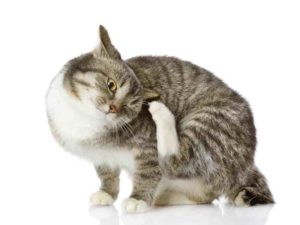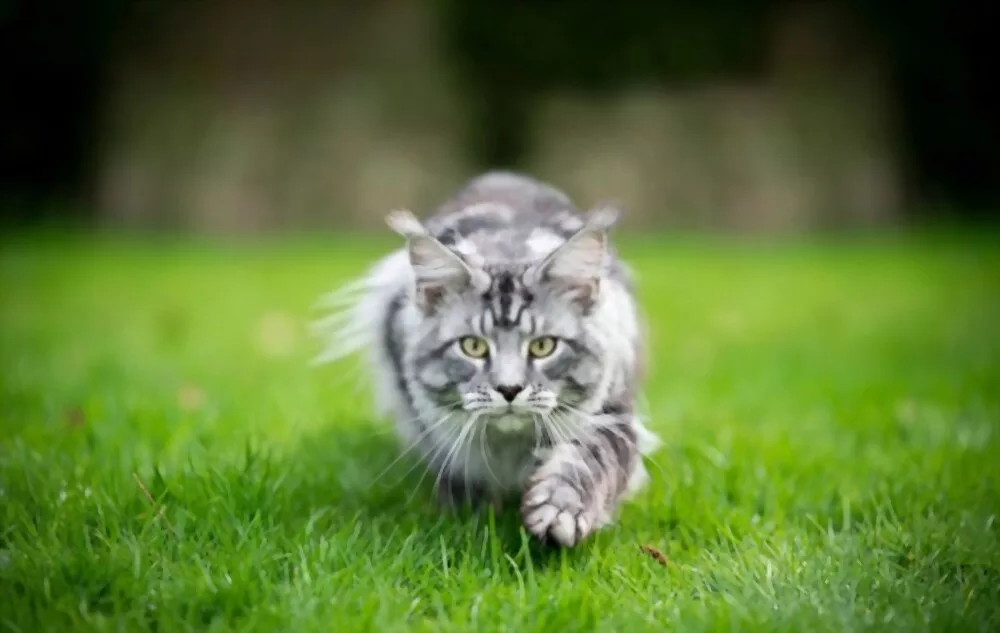
Cats have always captivated us with their mysterious and sometimes perplexing behavior. From purring to knocking things over, these furry creatures never fail to surprise us. In this comprehensive guide, we will delve into the various behaviors exhibited by cats and uncover the meanings behind them. Whether you are a seasoned cat owner or a curious enthusiast, this article will shed light on the fascinating world of feline actions.
Purring: The Multifaceted Melody
Purring is a universal language among cats, but its true purpose remains enigmatic. According to Dr. JoAnna Pendergrass, a veterinarian based in Atlanta, purring serves multiple functions. Cats often purr when they are relaxed, using it as a self-soothing mechanism in times of stress or injury. Additionally, mother cats purr to guide their kittens to nursing. Purring is also a way for cats to socialize with each other and communicate their desires to their owners[^1^].
Decoding Belly Exposure: Trust and Communication
When a cat exposes its belly, it is a sign of trust and vulnerability. However, many cat owners have experienced the sudden withdrawal of this invitation, often accompanied by a bite or a scratch. Dr. Sam Meisler, a veterinarian and founder of PetWellClinic, explains that rubbing a cat’s belly is not always an open invitation for physical affection. It is primarily a form of communication, expressing trust and a desire for interaction. Building a deeper bond with your cat may eventually lead to being able to pet their belly without consequences, but it is crucial to approach with gentleness and respect[^2^].
Tail Wagging: A Window into Emotions
Contrary to the joyful wagging of a dog’s tail, a cat’s tail wagging is often a sign of heightened excitement, annoyance, or frustration. Dr. Evelyn Kass, a veterinarian with Pet Nutrition Doctor, explains that a thrashing tail may indicate a warning to stop a particular action or face potential aggression. On the other hand, when a cat’s tail tip is wagging, it could signify readiness to pounce on a toy or even a leg[^3^].
The Art of Napping: An Evolutionary Trait
Cats are notorious for their love of napping, and it turns out this behavior has evolutionary roots. Dr. Meisler explains that napping allows cats to conserve energy for hunting, a trait inherited from their wild ancestors. Although domestic cats no longer need to hunt for survival, their genetic predisposition to sleep and rest in warm areas remains strong. This explains why cats often seek out sunny spots or snuggle up on warm surfaces like laptops[^4^].
The Chirping Symphony: Hunting and Excitement
Aside from purring and meowing, cats also engage in chirping, a unique vocalization that holds significant meaning. Chirping is often observed when a cat spots a bird or insect, indicating the activation of their hunting instincts. This behavior is accompanied by tail twitching and dilated pupils. Chirping can also occur when a cat is excited to see someone, whether it’s a fellow feline or their beloved human companion[^5^].
Rise and Shine: Cats and Early Mornings
If you’ve ever been awakened by your cat’s early morning zoomies, you’re not alone. Cats are known for their bursts of energy at dawn, regardless of your alarm clock’s preferences. To discourage these early wake-up calls, consider installing blackout shades or blinds in your bedroom to block out the sun’s rays. Additionally, establish strict feeding times, avoiding immediate feeding when you wake up to prevent associating your rising with food. A second feeding shortly before bedtime can help delay their hunger and encourage a more peaceful morning[^6^].
The Topplers: When Cats Knock Things Over
It’s a classic cat behavior that has both amused and frustrated many owners – knocking objects off tables or shelves. Dr. Kass explains that cats are naturally curious creatures, exploring their environment through touch and pushing objects with their paws. They respond to the outcomes of their actions – if something rolls, it becomes a potential prey to chase. Additionally, if their owners react by rushing to their side, it reinforces the behavior, leading to repeated toppling episodes[^7^].
Scratching: Necessity and Territory
Scratching is an innate behavior in cats, serving multiple purposes. It helps them maintain their claws, mark their territory, release energy and excitement, and simply feels good. To protect your furniture from their scratching instincts, provide them with an enticing alternative, such as a scratching post or pad. Rubbing it with catnip and rewarding them when they use it will encourage them to redirect their scratching behavior. Alternatively, consider investing in cat-proof furniture that can withstand their scratching tendencies[^8^].
The Language of Licks: Affection and Grooming

When your cat showers you with affectionate licks, they are creating a special bond with you. Dr. Pendergrass explains that this behavior stems from kittenhood when mother cats groom their kittens as a form of care and affection. Licking is a way for cats to show their love and establish a social connection with their human companions. However, it’s important to note that excessive licking may indicate stress or anxiety, and consulting with a veterinarian is advisable in such cases[^9^].
The Art of Self-Grooming: A Cat’s Daily Routine
Cats are renowned for their meticulous grooming habits, spending a significant amount of time licking themselves. Their self-grooming routine is essential for cleanliness and maintaining a healthy coat. Cats possess the necessary tools for grooming, including their paws, a rough tongue, and saliva. Unlike dogs, routine baths are not necessary for cats, as they are equipped to keep themselves clean. However, in rare cases where a bath is required, it’s crucial to approach it carefully to prevent scratches and distress[^10^].
Gifts from the Hunt: Dead Animals and Toys
If your cat presents you with a “gift” in the form of a dead animal or toy, it’s their way of showing affection and inclusion. Dr. Meisler explains that cats consider their owners as part of their pack and offer these “prey items” as tokens of care and sustenance. This behavior may also stem from imitating their mother cats or a desire to store their catch for later consumption. While it may not be the most pleasant surprise, it’s essential to appreciate the intention behind this gesture[^11^].
The Meow Symphony: Communication with Humans

Meowing is a form of communication that cats reserve for interactions with humans. They employ various types of meows to convey different messages, such as hunger, boredom, or discomfort. While some cat breeds are naturally chattier than others, a sudden increase in meowing frequency may indicate an underlying issue. If your cat’s meowing patterns change significantly, it is advisable to consult with a veterinarian to rule out any potential health concerns[^12^].
The Cord Conundrum: Chewing and Safety
Cats have a natural inclination to play and explore, often leading them to chew on objects like cords, strings, and ribbons. This behavior is not driven by destructive intent but rather the accessibility of these items. To prevent potential hazards, it’s essential to stow away unused cords and cover exposed ones with cord covers. Bitter apple spray can also be used as a deterrent, but it should be applied sparingly to avoid any negative effects on the cat’s health[^13^].
Litter Box Woes: Insights into Health and Behavior
Cats are naturally inclined to use litter boxes, making any deviation from this behavior a cause for concern. If your cat consistently avoids the litter box, it may be due to various factors. Dr. Meisler suggests considering the location and cleanliness of the box, as cats prefer a clean and easily accessible area. Additionally, behavioral issues, such as territorial disputes or a lack of mental and physical stimulation, can contribute to litter box aversion. In some cases, medical conditions like urinary tract infections may be the underlying cause, and a veterinary consultation is recommended[^14^].
The Kneading Ritual: Love and Comfort
Kneading, also known as making biscuits or mashing potatoes, is an endearing behavior displayed by cats. Dr. Pendergrass explains that cats knead to show affection, whether it’s directed towards their owners or a cozy blanket. It is a behavior rooted in love and comfort, often reminiscent of their kittenhood when kneading against their mother’s belly stimulated milk production. Moreover, kneading can be a self-soothing mechanism for anxious felines[^15^].
The Grass Snack: Nutritional or Digestive Aid?
Observing your cat munching on grass may seem perplexing, but experts have formulated several theories to explain this behavior. One possibility is that cats eat grass to soothe their stomachs, aiding in digestion or expelling hairballs. Another theory suggests that it serves as a source of nutrients that may be lacking in their diet. Ultimately, it could also be a matter of personal preference, as cats simply find grass to be a tasty snack[^16^].
The Language of Rubs: Marking Territory and Affection
When your cat rubs against objects or even against you, it is a form of marking territory. Dr. Kass explains that cats have scent glands on their face, and by rubbing against people or objects, they deposit their unique identifying odors. This behavior signifies that you are considered part of their family, and they are claiming you as their own. It is a heartwarming gesture that strengthens the bond between cats and their human companions[^17^].
In conclusion, understanding cat behavior is an ongoing journey of discovery. By decoding their actions and behaviors, we can deepen our connection with these enigmatic creatures. From purring to knocking things over, each behavior holds a unique meaning, providing insights into a cat’s emotional state and communication style. By observing and responding to their actions with love and care, we can foster a harmonious and fulfilling relationship with our feline friends.